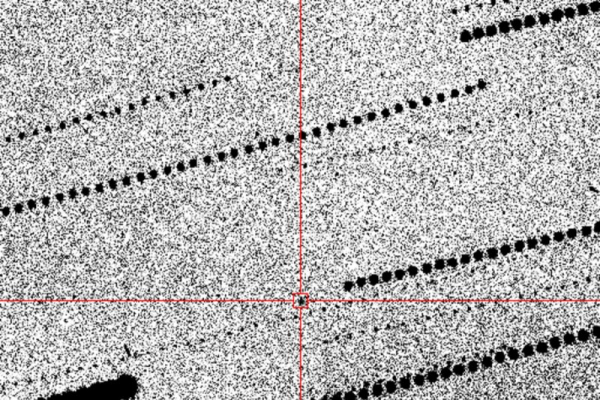
Information might seem immaterial.
But within a few short centuries, the total amount of digital bits produced annually by humanity could exceed the number of atoms on our planet and, even more unexpectedly, account for half of its mass.
Those are the conclusions of a mind-bending new study looking at the growth of data over time and its potentially catastrophic consequences.
We live in information-rich times. Cell phones everywhere and high social media use mean that almost every human being is generating astonishing quantities of computerized content every day.
IBM and other technology research companies have estimated that 90% of the world’s current digital data was produced in the last decade alone, prompting physicist Melvin Vopson of the University of Portsmouth in England to wonder where we might be headed in the future.
His analysis began with the fact that Earth currently contains roughly 10^21, or 100 billion billion, bits of computer information.
“This is everything we collectively do,” Vopson told Live Science. “Any digital content produced and stored anywhere on the planet by anyone.”
Vopson then calculated how much more data might exist in the future. This isn’t simply a linear extrapolation, since the amount of new information is also growing with time.
Related content
— Top 10 ways to destroy Earth
— Super-intelligent machines: 7 robotic futures
—The biggest unsolved mysteries in physics
Assuming a 20% annual growth rate in digital content, Vopson showed that 350 years from now, the number of data bits on Earth will be greater than all the atoms inside it, of which there are about 10^50 or a hundred trillion trillion trillion trillion. Even before this time, humanity would be using the equivalent of its current power consumption just to sustain all these zeros and ones.
“The question is: Where do we store this information? How do we power this?” Vopson said. “I call this the invisible crisis, as today it is truly an invisible problem.”
While such timescales might seem far enough in the future to ignore at present, Vopson also warns of another possible concern. In 1961, the German-American physicist Rolf Landauer proposed that, because erasing a digital bit produces a tiny amount of heat, there’s a link between information and energy.
Though still a matter of scientific debate, this finding, known as Landauer’s principle, has received some experimental verification in recent years. In a 2019 study published in the journal AIP Advances, Vopson posited that there might therefore be a relationship between information and mass.
The conjecture relies on the famous equation E = mc^2, derived by Albert Einstein at the beginning of the 20th century. Einstein’s work showed that energy and mass are interchangeable, leading Vopson to calculate the potential mass of a single bit of information — about 10 million times smaller than an electron.
This means that the current mass of information produced every year is insignificant, about the weight of a single
Assuming a 50% growth rate, half the planet would be information by just 2245. Vopson’s findings appeared Aug. 11 in the same journal, AIP Advances.
“I see this as a real problem,” Vopson said. “Just [like] burning fossil fuels, plastic pollution and deforestation, I think the information is something overlooked by everyone. We are literally changing the planet bit-by-bit.”
In fact, he considers the growth rates in his paper to be somewhat conservative (the International Data Corporation estimates the current data growth rate at 61 percent) and thinks this information catastrophe might occur sooner than predicted. A way to alleviate the issues of storing such vast amounts of data might be to develop technology that would keep information in non-material mediums such as holograms, he said.
The arguments put forth in the study are thought-provoking and surprising, particle physicist Luis Herrera of the University of Salamanca in Spain, who was not involved in the work, told Live Science. But the idea that information has mass remains theoretical and will require experiments to prove it, he added.
Given the long timeframes involved and the reality of other, more immediate crises, “I think there are a lot more important problems than this one,” Herrera said.
Sourse: www.livescience.com





